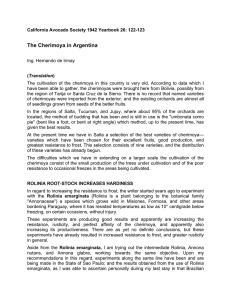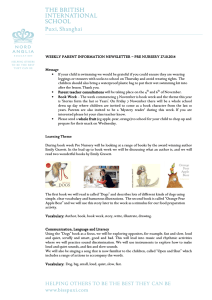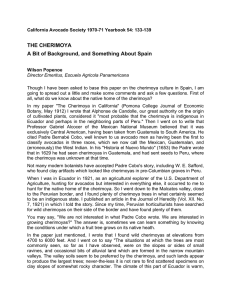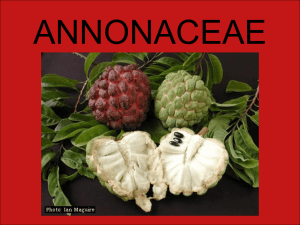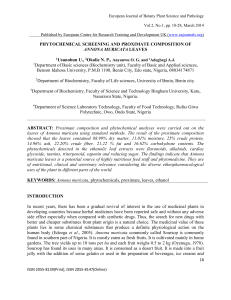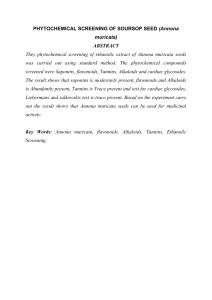FRUITS OF THE ANNONAS
advertisement
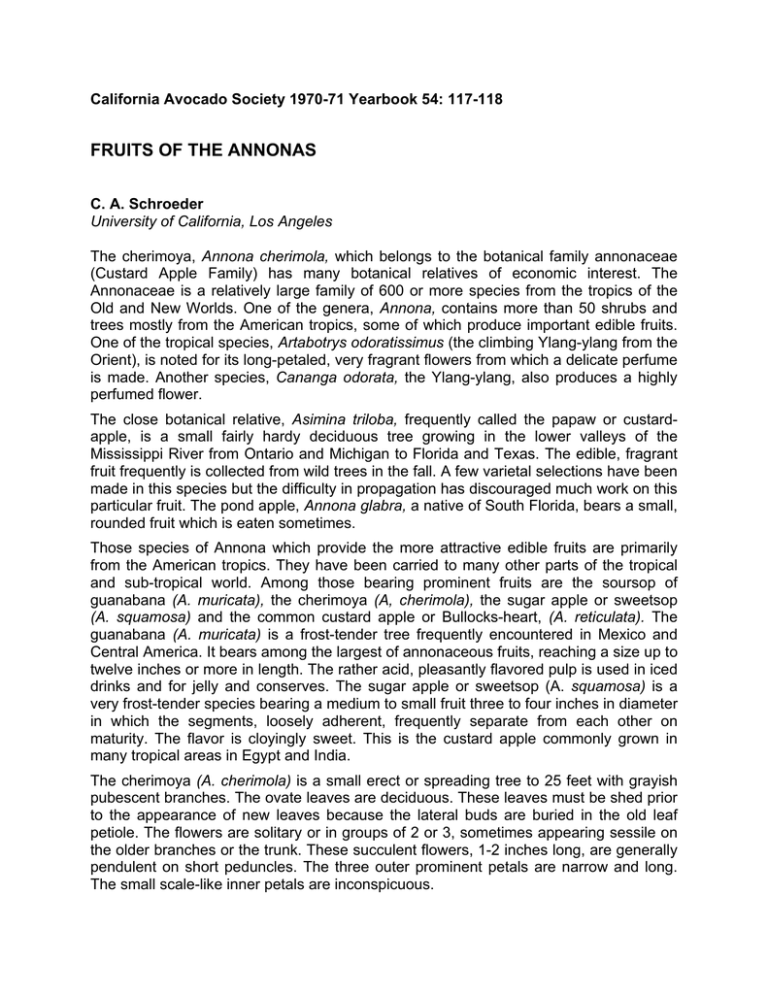
California Avocado Society 1970-71 Yearbook 54: 117-118 FRUITS OF THE ANNONAS C. A. Schroeder University of California, Los Angeles The cherimoya, Annona cherimola, which belongs to the botanical family annonaceae (Custard Apple Family) has many botanical relatives of economic interest. The Annonaceae is a relatively large family of 600 or more species from the tropics of the Old and New Worlds. One of the genera, Annona, contains more than 50 shrubs and trees mostly from the American tropics, some of which produce important edible fruits. One of the tropical species, Artabotrys odoratissimus (the climbing Ylang-ylang from the Orient), is noted for its long-petaled, very fragrant flowers from which a delicate perfume is made. Another species, Cananga odorata, the Ylang-ylang, also produces a highly perfumed flower. The close botanical relative, Asimina triloba, frequently called the papaw or custardapple, is a small fairly hardy deciduous tree growing in the lower valleys of the Mississippi River from Ontario and Michigan to Florida and Texas. The edible, fragrant fruit frequently is collected from wild trees in the fall. A few varietal selections have been made in this species but the difficulty in propagation has discouraged much work on this particular fruit. The pond apple, Annona glabra, a native of South Florida, bears a small, rounded fruit which is eaten sometimes. Those species of Annona which provide the more attractive edible fruits are primarily from the American tropics. They have been carried to many other parts of the tropical and sub-tropical world. Among those bearing prominent fruits are the soursop of guanabana (A. muricata), the cherimoya (A, cherimola), the sugar apple or sweetsop (A. squamosa) and the common custard apple or Bullocks-heart, (A. reticulata). The guanabana (A. muricata) is a frost-tender tree frequently encountered in Mexico and Central America. It bears among the largest of annonaceous fruits, reaching a size up to twelve inches or more in length. The rather acid, pleasantly flavored pulp is used in iced drinks and for jelly and conserves. The sugar apple or sweetsop (A. squamosa) is a very frost-tender species bearing a medium to small fruit three to four inches in diameter in which the segments, loosely adherent, frequently separate from each other on maturity. The flavor is cloyingly sweet. This is the custard apple commonly grown in many tropical areas in Egypt and India. The cherimoya (A. cherimola) is a small erect or spreading tree to 25 feet with grayish pubescent branches. The ovate leaves are deciduous. These leaves must be shed prior to the appearance of new leaves because the lateral buds are buried in the old leaf petiole. The flowers are solitary or in groups of 2 or 3, sometimes appearing sessile on the older branches or the trunk. These succulent flowers, 1-2 inches long, are generally pendulent on short peduncles. The three outer prominent petals are narrow and long. The small scale-like inner petals are inconspicuous. The cherimoya fruit is a syncarpium of many segments or carpels fused together with the receptacle to form a fleshy mass. Each carpel, if pollinated, contains an oval brown seed the size of a coffee bean. The several seeds are readily separated from the flesh. If the ovule does not develop a seed, the carpel tends to shrink which results in malformed fruit. The fruit ranges in form from globular, ovoid to conical, 3 to 6 inches long, and from a few ounces to two and a half pounds in weight. The fruit surface is smooth, finger-printed, tuberculate, umbonate or mammillate. The soft melting pulp is cream colored to white, somewhat acid and generally considered delicious in taste. The fruit is rich in starch when firm but increases markedly in sugar as it softens to a custard-like consistency when fully mature. It is characterized by a pleasant fruity odor.


